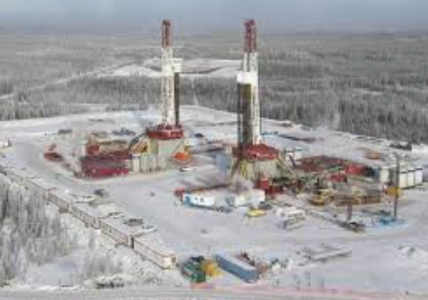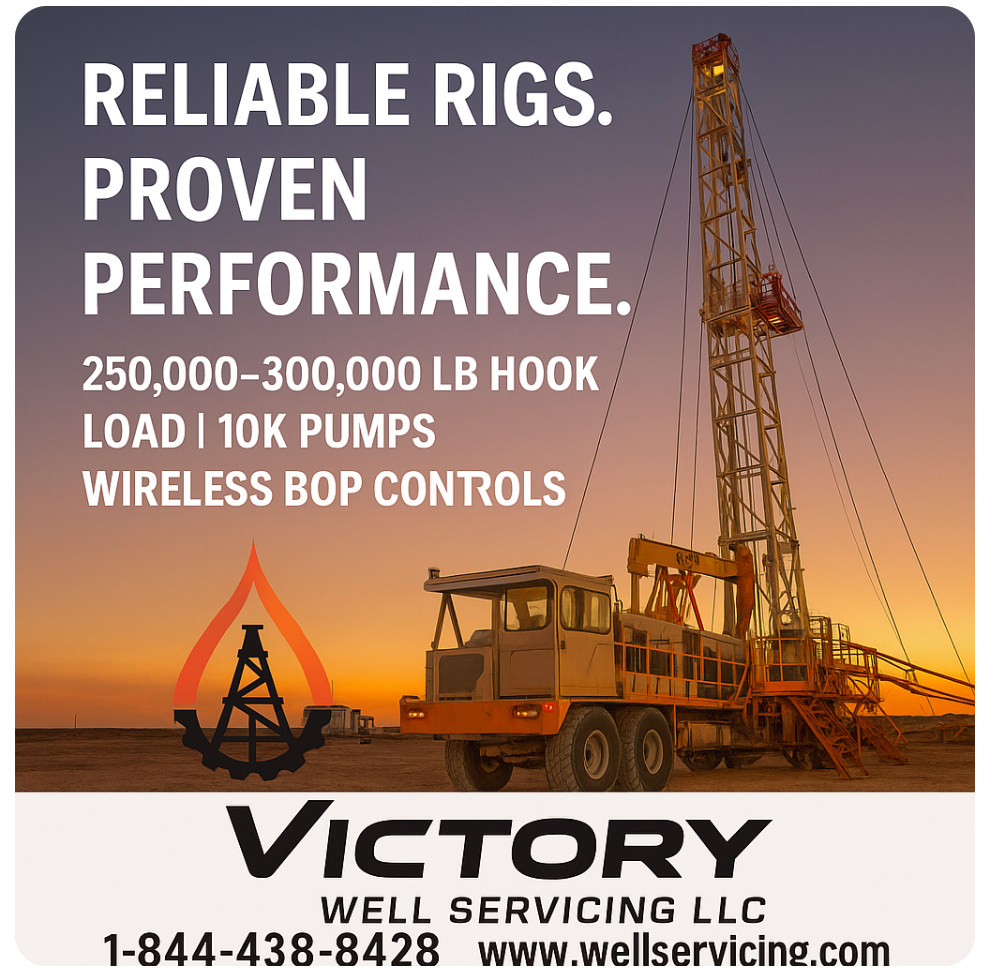In the modern shale era, drilling may get the headlines — but workovers and drillouts are the backbone of long-term production. Every well eventually needs maintenance, optimization, or mechanical repair. Wells decline, frac plugs need to be milled out, artificial lift systems fail, and reservoir conditions change.
Understanding the terminology, tools, and techniques behind this side of the industry is essential for anyone operating in U.S. shale. Below is a complete, field-level guide that walks through the entire landscape of well interventions, blending real-world operational context with clear definitions.
The Foundation: What Workovers Actually Are
Workover Rig (Definition)
A workover rig is a specialized service rig used after a well has been drilled and completed. These rigs do not drill new wells—they repair, maintain, or modify existing ones. Workover rigs handle tubing, rods, pumps, and downhole equipment to restore or optimize production.
In U.S. land operations, conventional rigs are the default workover method because they are fast, economical, and widely available.
Conventional Rigs (Definition)
A conventional rig uses a mast, drawworks, and mechanical hoisting to run/pull pipe. They are used when the well is dead (killed) or low pressure and do not require specialized pressure-control equipment.
For 95% of workovers in most basins, this is the rig you see.
When Pressure Dictates Everything: Snubbing & Hydraulic Workover
Hydraulic Workover (HWO) / Snubbing (Definition)
A hydraulic workover unit (HWO)—or snubbing unit—is designed for live well operations. Instead of a drawworks, HWOs use hydraulic jacks to push or pull pipe against wellbore pressure.
They are used when you cannot safely kill the well due to:
- extreme pressure
- risk of formation damage
- cost of kill-weight brine
- cross-flow risks
- unstable zones
Snubbing (Definition)
Snubbing allows tubulars to be run or pulled while the well remains under pressure. The unit “snubs” the pipe against the upward force that would otherwise eject it out of the well.
“Well-Control-Minded” (Definition)
Some basins—like the Haynesville, parts of the Permian, and deep Wolfcamp benches—are known for being well-control-minded. This means:
- strict focus on pressure containment
- avoiding well kills whenever possible
- using snubbing/HWO
- heightened awareness of blowout risks
- designing ops around pressure management
These are the regions where HWO still thrives.
Why Stimulations Matter to Workovers: Primary, Secondary & Tertiary
Every well follows a lifecycle, and stimulation plays a huge role in when and why workovers occur.
Primary Stimulation (Definition)
These are treatments performed right after drilling:
- initial hydraulic fracturing
- acidizing
- first-stage perforating
This is what gets the well online.
Secondary Stimulation (Definition)
Performed when production declines:
- re-fracs
- acidizing to remove damage
- scale/sand cleanouts
- perforation additions
These often require workover rigs, CT, or E-line.
Tertiary Stimulation (Definition)
Deeper, more aggressive treatments later in life:
- aggressive acid treatments
- polymer/surfactant injections
- re-fracs in new zones
- mechanical isolation + new stimulation
These jobs often involve complex recompletions.
Interventions, Recompletion Work & Kill Practices
Interventions (Definition)
Any operation after initial completion that restores or improves production. This includes:
- repairing artificial lift
- cleanouts
- stimulation
- fishing
- recompletions
- ESP replacements
Recompletions (Definition)
A recompletion changes the producing zone, often by:
- adding new perforations
- isolating watered-out intervals
- shifting production into remaining rock
Recompletions are increasing as operators target more zones in legacy wells.
Kill Fluid (Definition)
Kill fluid is a heavy-density brine or mud used to stop a well from flowing. Its hydrostatic pressure exceeds formation pressure.
In high-pressure benches, killing a well may be unsafe or uneconomical — pushing operators toward HWO.
Chemistry & Fluids Behind Workovers
Chlorine Dioxide Treatments (Definition)
ClO₂ treatments oxidize organics, remove bacteria and biofilms, and clean up produced fluids—especially in:
- older wells
- water-flood systems
- sour or microbially contaminated fields
Brine (Definition)
Brine is a saltwater-based fluid formulated for density and chemical compatibility. Used as:
- workover fluid
- kill fluid
- completion fluid
High-quality brine reduces formation damage and supports well control.
Production & Surface Operations
Surface Operations (Definition)
Covers everything above-ground:
- wellhead equipment
- separators
- tanks
- water handling
- metering
- pipelines and disposal
In shale, the surface network is often more complex than the downhole one.
Production Operations (Definition)
The day-to-day discipline of keeping wells flowing:
- artificial lift optimization
- troubleshooting
- water management
- pressure surveillance
- flow assurance
These teams are intimately tied to workovers.
Drillouts & Plug Removal: The First Big Intervention
Drillouts (Definition)
A drillout removes frac plugs, bridge plugs, or other temporary isolation devices after multi-stage frac jobs. Done using:
- coiled tubing (CT)
- conventional rigs with stick pipe
This is one of the largest work scopes in shale.
Operational Models: Central Ops & Modern Efficiency
Central Ops (Definition)
Centralized Operations integrate:
- drilling
- completions
- workovers
- production
- logistics
- facilities
- safety
Standardized workflows → faster cycle times, lower costs, fewer surprises.
Wireline & Light Intervention Tools
E-Line / Electric Line (Definition)
E-line is used for:
- perforating
- logging
- tool deployment
- plug setting/pulling
- diagnostics
It offers real-time data and power.
Why Some Wells Require Special Equipment
Higher-Pressure Benches (Definition)
A higher-pressure bench is a geological interval with elevated pore pressure. Examples:
- Wolfcamp C
- deeper Woodford intervals
- certain Haynesville zones
These require:
- stronger well control
- higher mud weights
- careful workover practices
Extended Wellbores (Definition)
Long laterals (15,000–20,000 ft+) increase:
- friction
- torque & drag
- difficulty of coil drillouts
- risk of stuck pipe
These wells often challenge conventional drillout workflows.
Spud Rigs (Definition)
Small rigs used to drill surface sections and set surface casing before the big rig arrives.
U-Laterals (Definition)
U-shaped wellbores with two horizontal legs forming a continuous “U.” Rare but growing where operators need multiple landing points from one surface location.
Well-Control Hazards During Workovers
Cross-Flow (Definition)
Occurs when a high-pressure zone pushes fluid into a lower-pressure zone inside the wellbore. Major risk during:
- recompletions
- snubbing
- perforation work
Frac Hits (Definition)
When hydraulic fracturing in a new well communicates with an older producing well nearby. Can cause:
- pressure spikes
- sand production
- well-control events
- temporary shut-ins
“Supercharged by Frac Fluids” (Definition)
Refers to a well whose pressure is temporarily elevated due to frac fluids trapped in the formation. These wells behave like high-pressure wells even if they are not naturally high pressure.
Pipe Mechanics: What Crews Monitor
Stick Pipe (Definition)
Conventional jointed pipe run in 30-ft “sticks.” Used with rigs.
Rigless Operations (Definition)
Interventions performed without a rig using:
- coiled tubing
- E-line/slickline
- pumping units
- capillary tubing
- HWO/snubbing packages
String Weight (Definition)
Measured weight of the pipe string hanging in the well. Deviations indicate:
- friction
- sticking
- obstructions
- compression/tension changes
Over-Pull (Definition)
When required pull exceeds expected string weight. Indicates:
- stuck pipe
- sand
- debris
- mechanical restriction
J-Turn (Definition)
The curved section transitioning from vertical to horizontal. Critical for:
- casing runs
- torque & drag
- cleanouts
- extended-reach performance
Conclusion: Why Understanding These Terms Matters Now
As wells get longer, pressures get higher, and operators focus on squeezing more value from existing assets, the role of workovers and drillouts becomes more strategic than ever.
Understanding this terminology isn’t academic—it’s operational. These concepts define:
- what equipment you select
- what risks you manage
- whether you kill a well or snub it
- how you optimize production
- how you avoid costly failures
The future of shale isn’t just drilling new wells — it’s maximizing the wells we already have. And that is the domain of workovers, interventions, and the crews who keep America’s wells producing.


